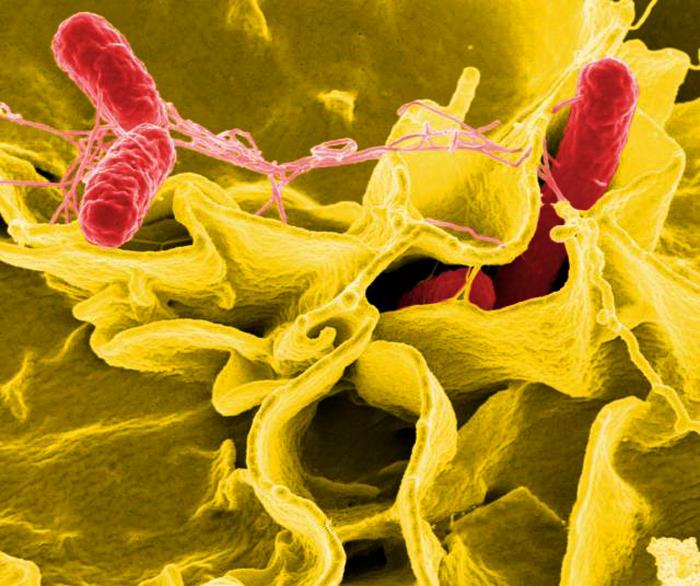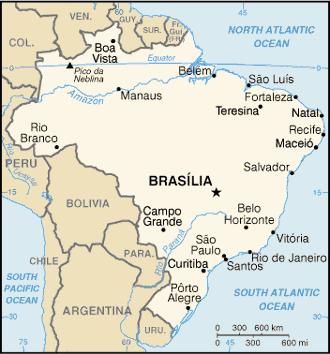
[ad_1]

The Brazilian Ministry of Health received 11,524 outbreaks of foodborne illness between 2000 and 2015, of which 219,909 people became ill and 167 died of the disease. Bacteria have caused most outbreaks of these diseases, including diarrhea and gastroenteritis. The most common were Salmonella spp., With 31,700 cases diagnosed during this period (14.4% of the total), Staphylococcus aureus (7.4%) and Escherichia coli (6.1%).

According to a survey by the Department of Social Development, bacteria of the genus Salmonella were the etiological agents of 42.5% of the laboratory-confirmed outbreaks of foodborne illness reported in Brazil between 1999 and 2009.
A group from the University of São Paulo headed by Juliana Pfrimer Falcão, a professor at the School of Pharmaceutical Sciences Ribeirão Preto (FCFRP-USP) of the University of São Paulo, is dedicated to the sequencing of the entire genome of the main bacteria responsible for acute diarrhea.
In an article published in PLOS ONE, biomedical scientists Amanda Aparecida Seribelli and Fernanda Almeida, belonging to the Falcão laboratory, describe how they sequenced and studied the genome of 90 strains of a specific serovar of Salmonella enterica known as S. Typhimurium(an abbreviation of Salmonella enterica subspecies serov Typhimurium).
The 90 strains were isolated between 1983 and 2013 at the Adolfo Lutz Institute of Ribeirão Preto (State of São Paulo, Brazil) and at the Oswaldo Cruz Foundation (Fiocruz) in Rio de Janeiro. They provide a portrait of the epidemiology of salmonellosis in Brazil over the last 30 years, from all parts of the country and having been collected from patients with foodborne infections or from Contaminated food such as poultry, pork, lettuce and other vegetables.
"We have received blood samples, brain abscesses and diarrheal stools," Seribelli said.
When the action of antibiotics in each of the 90 strains was tested, it was discovered that the vast majority of them were resistant to different classes of antibiotics being part of the arsenal of drugs. The study also identified 39 genes responsible for antibiotic resistance.
Researchers affiliated with Fiocruz, the School of Agrarian and Veterinary Sciences of São Paulo State University (FCAV-UNESP) and the Adolfo Lutz Institute participated in the study. The 90 strains of S. Typhimurium were sequenced at the United States Food and Drug Administration (FDA) during Almeida's doctoral stay.
The comparative analysis of genomes, transcriptomes and phenotypes of S. TyphimuriumIn Brazil, isolated human and food strains were supported by FAPESP, the FDA, the São Paulo Research Foundation, and the Faculty Development Office of the Ministry of Education (CAPES). ).

salmonellosis
Salmonella comprises two species, S. bongori and S. enterica. The latter is the type species, with a large number of subspecies and serovars that cause more food-borne infections than any other species in Brazil and in the world. The human and animal intestinal tract is the main natural reservoir of this pathogen, with poultry, pork and related food products being the main vector of transmission.
The six subspecies of S. enterica are subdivided into 2,600 serovars. A serovar (abbreviation for serological variant) is a distinct variant of a species of bacterium or virus characterized by the same number of specific surface antigens.
The most important subspecies of S. enterica from an epidemiological point of view is S. enterica subspecies enterica, responsible for the foodborne infection called salmonellosis. The symptoms are diarrhea, fever, stomach cramps and vomiting.
S. enterica subsp. enterica was the leading cause of the 31,700 cases of salmonellosis reported in Brazil between 2000 and 2015. The most frequently isolated serovars of this subspecies are S. Typhimurium and S. Enteritidis.
S. Enteritidis is one of the main serovars responsible for salmonellosis. It first spread during a pandemic that appeared in Europe in the 1990s. S. Typhimurium was the most common serovar before the pandemic and continued to cause infections.

According to Almeida, the 90 strains analyzed in the study belonged to S. Typhimurium. Another FCFRP-USP researcher (also at the university's clinical, toxicology and bromatology laboratory) is currently sequencing and analyzing serovar-containing samples. S. Enteritidis.
Almeida took the 90 strains of S. Typhimurium in the US in 2015. "Their genomes were sequenced at the FDA's Center for Food Safety and Applied Nutrition in Maryland, under the supervision of researcher Marc W. Allard," he said.
S. TyphimuriumThe genome contains 4.7 million base pairs. A brief reflection tells us that the study generated a mountain of data, more precisely 423 million bases corresponding to the sum of 90 genomes.
After returning to Ribeirão Preto, Almeida collaborated with Seribelli for a comparative analysis of the genomes of different strains to understand their diversity and evolutionary relationships.
According to Almeida, the technique used was high-throughput genotyping with SNPs ("snips" and abbreviation for single-nucleotide polymorphisms), which allowed them to identify the genetic makeup (genotype) of each strain by means of a sequencing of the DNA. SNPs are the most common markers of genetic variation. The phylogenetic results separated the 90 strains of S. Typhimurium in two groups, A and B.
"The group of samples taken from food was different from the group taken from humans," Seribelli said. "The food isolates were split between groups A and B in relatively similar numbers, suggesting that more than one subtype is circulating in foods in Brazil. Human isolates were more common in group B, suggesting that a specific subtype probably is suitable for humans. "
In another important part of their research funded by FAPESP, scientists measured antibiotic resistance in each of the 90 strains. According to the study, 65 (72.2%) strains were resistant to sulfonamides, 44 (48.9%) to streptomycin, 27 (30%) to tetracycline, 21 (23.3%) to gentamicin and seven (7.8%) with ceftriaxone. a cephalosporin antibiotic.
Origin of resistance
The analysis of SNPs identified 39 genes for resistance to different classes of antimicrobials or antibiotics, such as aminoglycoside, tetracycline, sulfonamide, trimethoprim, beta-lactam, fluoroquinolone, phenicol and macrolide. Point mutations have also been found in some genes, such as gyrA, gyrB, parC and parE.
"It is striking that S. Typhimurium is resistant to antibiotics that can be used to treat the disease, "said Seribelli," These drugs are available to doctors to fight against resistant infections.They are a second line of defense when the patient's immune system does not kill not microorganisms because salmonellosis is normally self-limiting and does not require the use of antibiotics.The main problem is that it fails and the bacteria become invasive. "

The attention of the scientists also drew attention to the difference between the resistance of the strains during the 30-year sampling period. "The samples of S. Typhimurium collected in the mid-1990s showed more antibiotic resistance than samples from later years. This could be explained by the emergence in the early 90s of serovar S. Enteritidis, which has since become one of the main causes of salmonella infection, "said Seribelli.
S. Enteritidis has been known since the 1950s, but for a while it has caused fewer cases of the disease. This has been radically changed by the S. Enteritidis pandemic, which began in the late 1980s and early 1990s in Europe, then spread throughout the world.
"Since, S. Enteritidis was one of the most prevalent serovars in Brazil and in the world. As a result, it is a serovar that can also be fought with antibiotics if necessary, "said Seribelli.
According to Almeida, S. Typhimurium remains one of the major isolated serovars in humans, animals and foods in Brazil and around the world.
From S. Enteritidis pandemic in the mid-1990s, the number of resistant strains has apparently decreased compared to the pre-1990s, but it is not clear whether the virulence of these strains has increased to allow them to adapt to this new niche. .
"The main finding of this research is the discovery of a large number of resistance genes in the samples, considering that they have been isolated in humans and in food. This highlights the very high risk of contamination in Brazil of foods containing antimicrobial resistant strains of Salmonella, "said Almeida.
Related:
Source link